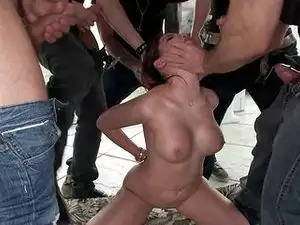Don't Sleep On The Subway Book ThreeChapter 45: Aug 1944 French Resistance Uprising In Paris free porn video

Adolf Hitler – August 1944
“Defend Paris to the last, destroy all bridges over the Seine and devastate the city.”
A black and white film titled “Is Paris Burning” is a quasi-documentary produced as a French/American project about the liberation of Paris in August 1944 by the French Resistance and the assistance of Free French Forces during World War II.
If you are an Amazon Prime member, you can watch this film for free. There are multiple street scenes of Paris spliced into the film showing the fighting on the streets around Notre Dame Cathedral, The Eiffel Tower and the many bridges in Paris where heavy fighting took place.
Synopsis: Hitler sends his envoy, General Von Choltitz as the new military commander of occupied Paris. He expects the General will obey his order to destroy Paris completely as a punishment to the French for resisting his rule. There is a split in the resistance fighters with the followers of General DeGaulle taking the attitude of “wait and see” and the Communists wanting to start an uprising to protect the city. The Communists win out and the Gaullists go along with them once the uprising begins.
At the beginning, General Choltitz follows the Fuhrer’s orders and he orders the Luftwaffe to bomb the Police headquarters which had been taken over by the resistance fighters. He changes his mind because of the danger the bombs present to the Notre Dame Cathedral and accepts a temporary truce from the resistance fighters. The truce ends quickly when the resistance discovers the plan to destroy the Eiffel Tower and other historic sites with explosives. The resistance fighters contact the American forces under General Omar Bradley and they advise that key areas of Paris are already in the hands of the resistance and that they need the American assistance to prevent the destruction of the beautiful city.
Eventually, General Choltitz sees the futility of the situation and he decides to surrender to the American forces shortly after they enter the city. General De Gaulle takes full credit for the surrender despite the fact it was accomplished primarily by the Communist resistance fighters and assisted by the entry of the American forces into the city.
This film is accurate enough to be a good outline of the taking of Paris by the allies and despite a lot of conflicting theories about the so-called “Battle of Paris” and the disputed “facts” of the takeover and the eventual “Liberation” of Paris, it is worthwhile watching with an open mind about the nuanced dialogue.
The battle started with a worker’s strike and a protest march on the streets of Paris.
Strangely or perhaps not so strangely, it was a common tactic of the Communist front in France to gain leverage in any dispute with the authorities. The more moderate “Free French movement” was not filled with the fire and passion found in the ranks of the Communist workers and they urged restraint right up until the last moment before the uprising.
The city of Paris was a city divided in 1944.
About half of the population was literally in bed with the Germans and they fed information to the Gestapo for extra rations, money and a share of the wealth confiscated by the Third Reich from an imprisoned Jewish minority. The other half was reluctant to openly confront the Occupiers of the city because they did not want to be drafted as slave labor for the Nazi regime and sent to Germany until the war ended.
General Eisenhower never really considered the liberation of Paris to be one of his primary objectives. His primary objective was to destroy the German army and end World War II in Europe as quickly as possible to allow the United States to devote their total effort to defeating the Japanese in the Pacific.
He resisted getting his forces involved in a battle for the liberation of Paris because he was focused on pursuing the Wehrmacht retreating across the Rhine River. He did not want to get bogged down in heavy street fighting in a large city like Paris and assume the responsibility for the feeding and protection of the large populace inside the city. The requirements of construction materials, labor and engineering skills to maintain the utilities and transport systems would slow his advance into the German territory that was his main objective.
On the other hand, General De Gaulle had his own agenda fearing that the Americans would implement the Allied Government for France like the one they had structured for Germany. He wanted to assume command of the government as soon as possible and he was focused on leading France with little motivation to use his resources to invade Germany.
His plan was to use the French 2nd Armored Division to enter Paris to assist the resistance fighters in taking over the city.
The resistance forces surfaced soon after the strikes hit the Paris Metro, the Police forces, and the postal workers in the city. They joined forces with the workers causing a general shutdown of all facilities across the entire city. Snipers took on the German tanks forcing them to button up and fire blind at the direction of the incoming fire.
It was still only a situation of light resistance as the Wehrmacht was focused on withdrawing their armor and troops back into German as quickly as possible to reinforce the Siegfried line of defense.
The German general in charge hesitated to use the Luftwaffe and refused to give the order to begin destroying the city because he felt that the war was already lost and it would only be an exercise in futility and do little to slow down the allied advance. In point of fact, he was already plotting to surrender to the allies as soon as they actually entered the city with his entire entourage minus the Gestapo who had already departed for the German border.
- 12.02.2022
- 45
- 0




























































